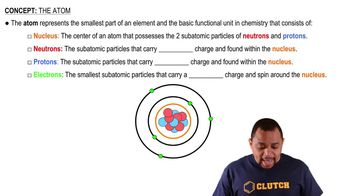Here are the essential concepts you must grasp in order to answer the question correctly.
Ionization Energy
Ionization energy is the energy required to remove an electron from a gaseous atom or ion. It is a key factor in determining an element's reactivity and is influenced by the atomic size and the effective nuclear charge. Generally, ionization energy increases across a period due to increasing nuclear charge and decreases down a group due to increased distance from the nucleus.
Recommended video:
Periodic Trends
Periodic trends refer to the predictable patterns observed in the properties of elements as you move across periods or down groups in the periodic table. For ionization energy, elements in the same group exhibit decreasing ionization energy down the group, while elements in the same period show increasing ionization energy from left to right. Understanding these trends is essential for predicting the order of ionization energies.
Recommended video:
Atomic Structure
Atomic structure involves the arrangement of protons, neutrons, and electrons within an atom. The number of protons defines the element, while the arrangement of electrons in shells influences chemical properties, including ionization energy. Elements with a full outer shell tend to have higher ionization energies, as their electron configuration is more stable and requires more energy to remove an electron.
Recommended video:
 McMurry 8th Edition
McMurry 8th Edition Ch.6 - Ionic Compounds: Periodic Trends and Bonding Theory
Ch.6 - Ionic Compounds: Periodic Trends and Bonding Theory Problem 59
Problem 59 Verified step by step guidance
Verified step by step guidance

